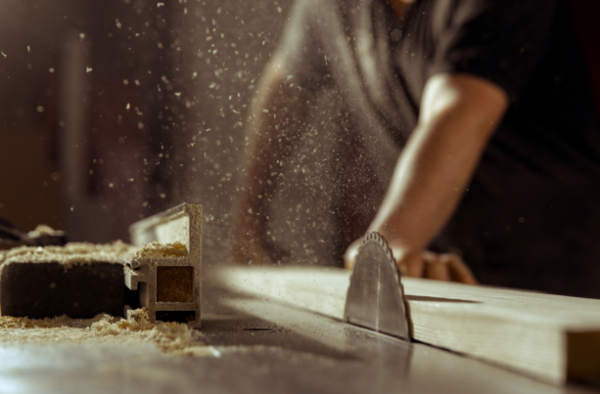Precision is essential in any project, whether you’re crafting furniture, building a deck, or tackling a home improvement project. Achieving clean, accurate cuts and precise measurements can make the difference between a professional finish and a subpar result. Richard R Wilk of Indiana will cover essential tips for using saws and measuring tools effectively to help you work with confidence and precision.
1. Choose the Right Tools for the Job
Saws
Different types of saws are designed for specific tasks. Understanding the purpose of each will help you achieve better results:
- Circular Saw: Ideal for straight cuts in wood, plywood, and medium-density fiberboard (MDF).
- Jigsaw: Best for cutting curves, intricate designs, and irregular shapes.
- Table Saw: Great for long, straight cuts and ripping boards.
- Miter Saw: Perfect for angled cuts, such as those needed for frames, molding, or trim.
- Hand Saw: Useful for smaller, precise cuts and quick jobs.
Measuring Tools
Accurate measuring tools are non-negotiable for precision work:
- Tape Measure: A versatile tool for measuring lengths and widths.
- Combination Square: Useful for ensuring right angles and marking lines.
- Speed Square: Great for marking 45-degree and 90-degree cuts.
- Calipers: Ideal for measuring smaller or more precise dimensions.
- Measuring Tape with Metric and Imperial Units: Offers flexibility in measurement systems.
2. Prioritize Safety
Precision starts with safety. When you’re comfortable and confident in using your tools, you’re less likely to make errors. Here are some safety tips to keep in mind:
- Always wear safety glasses or goggles to protect your eyes from flying debris.
- Use hearing protection, especially when working with power saws.
- Secure your workpiece with clamps or a vice to prevent it from moving during cutting.
- Ensure your saw blades are sharp and clean to avoid rough cuts or kickbacks.
- Follow the manufacturer’s instructions for operating power tools.
3. Master the Art of Measuring
The Golden Rule: Measure Twice, Cut Once
This age-old adage is crucial for precision. Double-check your measurements before making any cuts to avoid costly mistakes.
Mark Accurately
- Use a sharp pencil or fine-tip marker to make clear, precise lines.
- For greater accuracy, use a marking knife, which creates a thin groove in the material.
- When marking measurements, account for the width of the saw blade (kerf) to ensure the cut aligns perfectly with your plan.
Use Reference Points
Establish a reliable reference point on your material, and work outward from there. This approach reduces the chances of cumulative measurement errors.
4. Cutting with Precision
Understand Your Material
Different materials require different approaches. For instance:
- Wood: Ensure the grain direction aligns with your cut for a cleaner edge.
- Metal: Use a saw blade designed specifically for metal cutting.
- Plastic: Go slow and steady to prevent cracking or chipping.
Align Your Saw Properly
- Position the blade on the waste side of your cut line. This ensures the final piece matches your desired dimensions.
- Adjust the blade depth appropriately for your material to achieve a cleaner cut.
Use Guides
For straight cuts, use a guide such as:
- A straight edge or ruler clamped to the material.
- A built-in guide on the saw itself, such as those on circular or miter saws.
Control the Speed
- For power saws, allow the blade to reach full speed before making contact with the material.
- Apply steady, even pressure to avoid forcing the saw, which can lead to jagged cuts or blade damage.
5. Practice Clean Finishing Techniques
Even with precise cuts, finishing techniques can make a world of difference:
- Sanding: Use sandpaper or a sanding block to smooth rough edges and remove splinters.
- Filing: For metal or plastic, a file can help clean up burrs and sharp edges.
- Test Fit: Before final assembly, test fit your pieces to ensure accuracy.
6. Troubleshooting Common Issues
Crooked Cuts
- Ensure your saw blade is perpendicular to the surface of the material.
- Use a square or guide to verify your setup before cutting.
Rough Edges
- Switch to a blade with finer teeth for smoother results.
- Sand the edges post-cut for a clean finish.
Incorrect Measurements
- Double-check your tape measure’s starting point.
- Avoid stretching the tape, which can lead to inaccuracies.
7. Tips for Beginners
- Start with scrap material to practice cuts and measurements before working on your main project.
- Invest in quality tools; cheaper options may compromise precision and durability.
- Learn how to maintain your tools, including blade sharpening and calibration of measuring instruments.
8. Advanced Techniques for Precision
Once you’ve mastered the basics, consider incorporating advanced techniques:
- Laser Guides: Many modern tools come equipped with laser guides for even more accurate cuts.
- Templates: Use templates or jigs for repetitive cuts, ensuring uniformity.
- Digital Measuring Tools: Devices like laser distance measurers or digital calipers provide high precision for complex projects.
Achieving perfect cuts and precise measurements is a skill that requires practice, patience, and the right tools. By understanding the strengths of your saws, mastering measuring techniques, and following proper safety protocols, you can consistently create clean, accurate, and professional results. Whether you’re a seasoned professional or a DIY enthusiast, these tips will help elevate the quality of your work and the satisfaction of a job well done.
